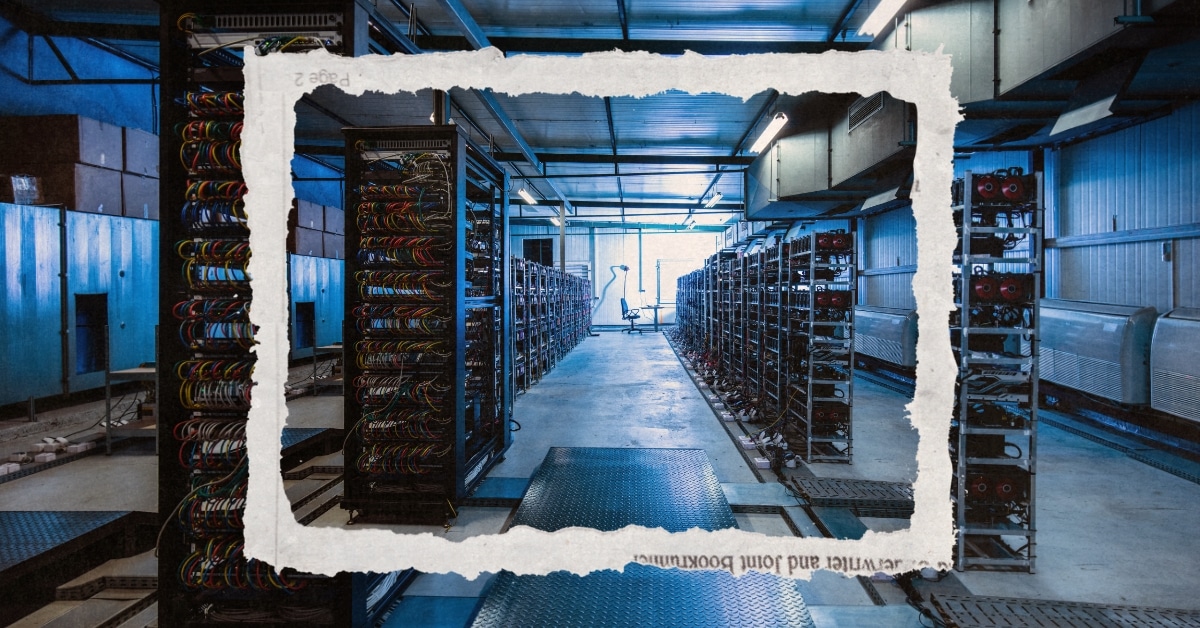News
A Beginner’s Guide – Forbes Advisor UK

Summary
Show more Show less
Cryptocurrency has long been a hot topic in investor circles, but its popularity has increased significantly in recent years. While it is undoubtedly an extremely risky investment where you could lose all your money, some investors see it as a legitimate option to include in a portfolio.
If you are new to this market, remember that purchasing cryptocurrency comes with inherent risks, just like any investment. It is important to conduct thorough research and understand how each type of cryptocurrency works before making any investment decisions.
What is cryptocurrency?
Cryptocurrencies are digital currencies that generally operate outside the regulation of any single company or government. Unlike traditional currencies such as the pound or the US dollar, cryptocurrencies are not backed by a central authority, such as the Bank of England.
They are instead overseen by an online, decentralized network of users. Cryptocurrencies are often imagined and called digital coins or tokens. They are protected using sophisticated encryption blockchain technology – meaning that they are, in fact, self-regulated by those who create, own and trade them.
You can use crypto “coins” to make purchases online, just like you would with regular money. However, the options of merchants who accept cryptocurrencies are more limited than those who accept traditional currencies.
When you make a crypto transaction, a group of computers using blockchain software checks whether the payment is valid. If everything is in order, the transaction is processed.
The blockchain system acts as a digital public ledger, recording all transactions. Miners or validators monitor these transactions and get paid for their work. After a transaction has been reviewed and confirmed, the person receiving the money can access it using their secret code, often called a private key.
In addition to using cryptocurrency as digital money, some people invest in it hoping that its value will increase over time, similar to investing in stocks or gold, although, as noted, the risks associated with cryptocurrencies are extremely high.
Types of cryptocurrencies
In 2009, Satoshi Nakamoto introduced the first cryptocurrency, bitcoin. With a market capitalization of more than $1 trillion, bitcoin is now the largest cryptocurrency in the world.
Today there are nearly 10,000 cryptocurrencies in total, totaling a market capitalization of over $2 trillion.
Some of largest cryptocurrencies to include:
Bitcoin (BTC)
Like other cryptocurrencies, bitcoin operates on a blockchain or shared public ledger. To ensure security and prevent fraud, transactions must be verified through a process called proof of work, in which miners solve cryptographic puzzles.
The value of Bitcoin has seen a substantial increase over the past decade, gaining widespread recognition. In May 2016, one BTC cost around $500. However, as of May 2024, the price had skyrocketed to over $60,000 for a single Bitcoin. This is an increase of 11,900%.
Ethereum (ETH)
It wasn’t until 2011 that alternative cryptocurrencies, later dubbed “altcoins,” entered the scene. However, the launch of Ethereum in 2015 really brought altcoins into the limelight, marking the beginning of their growing popularity. However, Ethereum stands out as the most prominent altcoin, with a market capitalization beaten only by Bitcoin.
While bitcoin aims to function as a decentralized currency, Ethereum is more like a computer network. It allows people to run special decentralized applications, or DApps, and set up smart contracts on their system.
Tether (USDT)
Tether, along with other similar tokens, is distinguished from other cryptocurrencies by its classification as a stablecoin. The value of a stablecoin is usually pegged to another store of value. Most often this is a government-issued currency, such as the US dollar, but it could be gold or some other commodity.
In theory, the stablecoin will have a method of holding its value equivalent to its peg, regardless of whether that peg is the dollar, the euro, or something else. In the case of Tether, the value of the token is maintained by reserves of US dollars equivalent to the total value of USDT.
In this way, Tether and other stablecoins are expected to exhibit greater stability than other cryptocurrencies, making them the preferred choice among investors concerned about the volatility of digital assets.
Solana (SOL)
Solana was designed to support decentralized finance, or DeFi applications, DApps and smart contracts. It uses a unique method that combines proof of participation and proof of history to process transactions quickly and securely. The platform’s native token, SOL, powers its operations.
Binance Coin (BNB)
Binance Coin is a cryptocurrency used for trading and commissions on Binance, one of the leading cryptocurrency exchanges globally. Introduced in 2017, BNB now performs multiple functions, including trading, payments and travel bookings.
Pros and cons of investing in cryptocurrency
While proponents of cryptocurrency investing may cite benefits such as decentralization, accessibility, and diversification, many investors see potential returns as the biggest advantage of investing in cryptocurrencies.
However, it is important to also recognize the risks of investing in cryptocurrencies. Cryptocurrencies often experience dramatic price swings, and as government regulations evolve, volatility is likely to continue. Security can also be a concern. Not all crypto projects are created equal, and many investors have been victims of scams or fraud in the cryptocurrency industry.
As is often said, anyone considering investing in cryptocurrencies should only invest what they are willing to lose. The cryptocurrency has produced substantial profits for some investors, but others have suffered significant losses.
What to consider before investing in cryptocurrency
Before diving into any investment, including cryptocurrencies, you need to do your due diligence. When evaluating whether a cryptocurrency investment is right for you, be sure to consider the following:
- Project details Each cryptocurrency has its own investment thesis, consensus mechanism, and use cases. It is important to understand the details and unique investment proposition of each cryptocurrency before getting involved.
- Your risk profile Be honest with yourself when evaluating your risk profile and the volatility of any cryptocurrency. Any cryptocurrency investor should be prepared for the possibility of a sharp price drop.
- Your investment goals Ask yourself how a cryptocurrency investment would fit into your broader financial goals. It is important to ensure that you are not relying entirely on your cryptocurrency investment for essential life goals such as retirement. Diversification and planning are key.
How to invest in cryptocurrency
For beginners entering the realm of cryptocurrencies, going through the process of purchasing digital currencies can seem daunting. However, you can start your cryptocurrency investment journey by following these simple steps.
1. Choose a cryptocurrency broker or exchange
There are two ways you can buy bitcoin and other cryptocurrencies: through a broker or through a cryptocurrency exchange.
- Cryptocurrency brokers make it easy to buy cryptocurrencies, but they may charge higher fees or limit moving holdings off the platform. Some investors prefer to store coins in crypto wallets offered by these platforms for added security.
- Cryptocurrency exchanges like Coinbase, Gemini and Binance offer platforms for buying and selling digital currencies. However, these platforms can be overwhelming for new investors. While intuitive options make buying easier, they usually come with higher commissions than standard trading platforms.
2. Set up an account
Once you have selected a cryptocurrency broker or exchange, you will need to create an account. Typically, this requires registering and providing personal information to prove who you are, often known as knowing your customers’ protocols. This may involve entering information from your driver’s license or passport. Sometimes you may need to provide a photo or ID of yourself.
3. Add funds to invest
Before you can start investing in cryptocurrencies, you need to make sure that the funds are available in your account. You can add money to your account through various methods, including linking it to your bank, initiating a wire transfer, or using a debit card (some banks place limits on how much you can transfer to a crypto account per month). The time it takes for funds to become available in your account varies depending on the deposit method and the cryptocurrency broker or exchange you choose.
Avoid borrowing to finance your crypto transaction as this simply increases the potential damage of losing your investment. This includes not using a credit card to transfer money to your account.
4. Initiate cryptocurrency transaction
With your account funded, you are ready to start purchasing cryptocurrencies. Once you have decided on the cryptocurrency you want to buy, you can enter its symbol – for example BTC for bitcoin – and specify the quantity of coins you want to buy.
Many exchanges and brokers allow the purchase of fractional shares of cryptocurrencies with large values, such as bitcoin or Ethereum. This accessibility ensures that those without significant capital can still invest.
How to keep your cryptocurrency safe
Cryptocurrency exchanges are often vulnerable to theft or hacker attacks. Losing or forgetting your account access codes could result in the loss of your investment. This is why it is essential to store your cryptocurrencies in a safe place.
If you purchase cryptocurrency through a broker, the cryptocurrency is usually stored in a crypto wallet linked to the exchange. If you are unhappy with the exchange’s service provider or prefer a more secure storage option, you can transfer your assets to a separate hot or cold wallet.
- Warm wallets Hot wallets are cryptocurrency wallets managed on internet-connected devices such as tablets, computers, or phones. While they are convenient, they pose a higher theft risk due to their continuous internet connection.
- Cool wallets Cold wallets, such as USBs or hard drives, provide high-level security for cryptocurrency storage because they are offline and disconnected from the Internet. However, there are risks. If you lose the associated key code or experience a device failure, you may permanently lose access to your cryptocurrency.
Depending on the exchange and the transfer amount, a nominal fee may be required to transfer your cryptocurrency out of the exchange.
News
US Cryptocurrency Rules Delayed by ‘Never-Ending’ Lawsuits

Ripple CEO says cryptocurrency industry still seeking regulatory clarity from US
Speaking to Bloomberg News on Wednesday (July 17), Author: Brad Garlinghouse he said America is behind behind other countries which have already adopted cryptocurrency regulations.
“What we’re seeing, where it’s the UK, Japan, Singapore… even the European Union, more than two dozen countries have come together to provide a framework for cryptocurrency regulation,” Garlinghouse said.
“It’s frustrating that we as a country can’t get that regulatory framework in place. And instead, we have this never-ending lawsuit coming from the SEC that doesn’t really address the problem.”
Ripple has been the target of some of these legal disputes. Securities and Exchange Commission (SEC) sued the company in 2020, accusing it of conducting a $1.3 billion operation offering of unregistered securities tied to its XRP token.
However, last year a judge ruled that only Ripple’s institutional sales of XRP, not retail sales, violated the law, a decision widely seen as a victory for the cryptocurrency industry.
As PYMNTS noted at the time, that ruling has “far-reaching repercussions impact across the digital asset ecosystem, which has long maintained that its tokens do not represent securities contracts.”
However, Garlinghouse told Bloomberg on Wednesday that the company cannot wage multimillion-dollar legal battles over each token.
He spoke to the news agency from the Republican National Convention in Milwaukee, where the party is backing the candidacies of former President Donald Trump and Ohio Sen. J.D. Vance, both of whom are considered pro-cryptocurrency.
But Garlinghouse argued that cryptocurrencies “should not be a partisan issue,” and noted that he had recently attended a conference in Washington that included Democrats, including White House officials.
“I think they were there, listening to the industry… it was refreshing to start having that conversation,” she said.
President Joe Biden earlier this year he vetoed a measure which would have ended the SEC’s special rules for crypto-asset custodians. This legislation was supported by both the digital asset industry and the banking industry.
Ripple early this year donated $25 million to the cryptocurrency industry’s super PAC Fair Smoothiewith Garlinghouse stating at the time that such donations would continue every year, as long as the industry had its detractors.
Second Open SecretsWhich monitor spending For campaigns, the PAC has spent $13.4 million this year, much of it to help defeat Rep. Katie Porter’s (D-Calif.) U.S. Senate campaign.
News
The Future of Cybersecurity in the Cryptocurrency Industry

The cryptocurrency space has had a tumultuous journey, with its fair share of ups and downs. As we look to the future, one area that remains a constant focus is cybersecurity. The digital nature of cryptocurrencies makes them inherently vulnerable to cyber threats, and as the industry evolves, so does the landscape of potential risks.
In 2022, the cryptocurrency market faced significant challenges, with over $2 trillion in market value lost. This event served as a wake-up call for the industry, highlighting the need for robust cybersecurity measures. The future of cryptocurrency security is expected to see a shift towards more regulated and established institutions taking the reins of crypto technology and blockchain infrastructure.
The decentralized nature of cryptocurrencies offers numerous benefits, such as transparency and financial inclusion. However, it also introduces unique security challenges. The risk landscape is filled with threats such as hacking, phishing, ransomware attacks, malware, and social engineering. These threats not only lead to financial losses, but also damage the reputation and trust within the cryptocurrency ecosystem.
Mini-MBA Tekedia edition 15 ((September 9 – December 7, 2024) started recordings; Register today for discounts reserved for early bird customers.
Tekedia AI in Business Masterclass Opens registrations Here.
Join the Tekedia Capital Syndicate and IInvest in Africa’s best startups Here.
The decentralized nature of cryptocurrencies offers many benefits, but it also presents unique security challenges. Cyber risks such as hacking, phishing, and ransomware pose threats to the integrity of digital assets. The infrastructure that supports cryptocurrencies is not immune to vulnerabilities, including smart contract flaws and exchange hacks.
To address these vulnerabilities, the infrastructure that supports cryptocurrencies must be strengthened. Smart contract vulnerabilities, exchange hacks, wallet breaches, and flaws in the underlying blockchain technology are significant concerns that must be addressed to ensure the security and integrity of digital assets.
As cybercriminal tactics and techniques become more sophisticated, the cryptocurrency industry must stay ahead of the curve. The future will likely see more targeted attacks, exploiting weaknesses in infrastructure, networks, and human factors. This requires a proactive and multifaceted approach to cybersecurity.
To mitigate these risks, several measures must be adopted:
Strengthening security measures: Developers, exchanges, and wallet providers must improve security protocols, use strong encryption, implement multi-factor authentication, and conduct regular security audits.
Education and awareness: Users should be educated on best practices for protecting their digital assets, including using strong passwords, recognizing phishing attempts, and using hardware wallets for secure storage.
Looking ahead, the cryptocurrency industry is expected to see an increased focus on robust security measures. Blockchain projects and exchanges are likely to invest in advanced encryption techniques and decentralized storage solutions to protect user assets. The future impact of cyber risk on cryptocurrencies will depend on the collective efforts of stakeholders to address vulnerabilities and strengthen security measures.
Collective efforts by stakeholders in the cryptocurrency space are crucial to address vulnerabilities and strengthen security measures. While challenges persist, advances in cybersecurity technologies and practices offer hope for a more secure and resilient cryptocurrency ecosystem.
The future of cybersecurity in the cryptocurrency industry depends on finding a balance between innovation and regulation. It requires a collaborative effort from all parties involved, from developers to end users, to create a secure environment that fosters trust and growth in the industry. As we move forward, it is critical that lessons learned from past events guide the development of stronger security measures, ensuring the longevity and stability of cryptocurrencies as a vital part of the modern economic toolkit.
Like this:
Like Loading…
News
Bullish XRP and RLBK price predictions rise, outpacing the broader cryptocurrency market, prompting Shiba Inu holders to switch!

Bitcoin’s one-week surge from $60,000 has pushed other cryptocurrencies into an uptrend. However, for many altcoins, this trend has been temporary. Altcoins such as XRP and Shiba Inu (SHIB) have experienced price drops. However, Rollblock, a new altcoin on the Ethereum blockchain, has thrived during this period, attracting thousands of investors looking for long-term growth.
XRP’s Nearly 30% Growth Over Last Week Drops as Selling Pressure Increases
XRP is seeing further price decline as Ripple investors withdraw their profits from the token. The surge in XRP’s price to $0.64 in the past week has provided investors with a perfect opportunity to increase their returns in the short term. With the ongoing sell-off in XRP, XRP has jumped over 8% in the past day and is now trading at $0.59. However, analysts tracking XRP indicators predict that XRP could still extend its gains by over 30% in the coming weeks.
Shiba Inu (SHIB) marks its third consecutive day of losses
Shiba Inu (SHIB) is in a period of adjustment after a week of strong gains. In the last 24 hours, SHIB has seen a jump of over 7%, reflecting a natural market fluctuation. Analysts are observing a death cross on the Shiba Inu chart, which historically signals the potential for future opportunities as the market stabilizes. As investors explore new possibilities, some are diversifying into promising altcoins like Rollblock (RBLK) to strategically rebalance their portfolios and capitalize on the emerging trend.
Rollblock (RBLK) Up Another 7% as New Investors Join Pre-Sale
Rollblock (RBLK) has taken the cryptocurrency market by storm, having attracted investors from more popular altcoins like Shiba Inu (SHIB) and XRP. Rollblock’s growth is attributed to its utility in the $450 billion global gaming industry.
Rollblock aims to use blockchain technology to bridge the gap between centralized and decentralized gambling. With blockchain technology, Rollblock secures every transaction in its online casino, providing transparency and convenience to millions of players who are uncomfortable placing bets on other iGaming platforms.
This innovative use of blockchain technology in the industry has grown Rollblock to over 4,000 new users in less than two months. With plans to add sports betting, this number is expected to grow exponentially in Q3.
Rollblock uses a revenue sharing model that splits up to 30% of its casino’s weekly profits with token holders. This happens after Rollblock buys back $RBLK from the open market and uses half of it for rewards. The other half is burned to increase the price of $RBLK.
Rollblock price has seen four increases in the past month with $RBLK tokens now selling for $0.017. Analysts predict that at the current growth rate, Rollblock could increase by over 800% before the presale ends. For investors looking for a long-term token with growth potential, phase four is the best time to buy Rollblock before its price skyrockets!
Discover the exciting Rollblock (RBLK) pre-sale opportunities now!
Website:https://Rollblockpresale.io/
Social: https://linktr.ee/Rollblockcasino
No spam, no lies, just insights. You can unsubscribe at any time.
News
Texas Crypto Miners Turn to AI as Crypto Declines

As cryptocurrency mining becomes less profitable, Texas cryptocurrency mining companies are switching to supporting artificial intelligence companies.
Bitcoin miners, with their sprawling data centers and access to significant energy resources, are ideally suited for computationally intensive AI operations, and as cryptocurrency mining becomes less profitable, companies see this shift as a logical answer to their problems.
On Thursday, Houston-based Lancium and Denver-based Crusoe Energy Systems announced a multibillion-dollar deal to build a 200-megawatt data center near the West Texas city of Abilene to support advanced artificial intelligence applications such as medical research and aircraft design, CNBC reported. The plant represents the first phase of a larger 1.2 gigawatt project.
Lancium and Crusoe’s move into AI mirrors a broader trend among bitcoin miners. The combined market capitalization of the top U.S.-listed bitcoin miners hit a record $22.8 billion in June. Companies like Bit Digital and Hut 8 are diversifying into AI, with Bit Digital securing a $92 million annual revenue deal to supply Nvidia GPUs and Hut 8 raising $150 million to expand its AI data center.
But the growing popularity of these operations also presents challenges, particularly for the Texas power grid. Last month, the Electric Reliability Council of Texas announced that the state is expected to nearly double its energy production by 2030 to meet the high energy demands of data centers and cryptocurrency operations.
Lieutenant Governor Dan Patrick expressed concern about the projections.
“Cryptocurrency miners and data centers will account for more than 50% of the additional growth. We need to take a close look at these two sectors,” He wrote on Twitter/X. “They produce very few jobs compared to the incredible demands they place on our network. Cryptocurrency miners could actually make more money selling electricity to the network than they do from their cryptocurrency mining operations.”
Analysts predict significant growth in data center power capacity, which is expected to account for up to 9% of U.S. electricity consumption by 2030.
The operations also pose challenges for nearby cities. Earlier this month, TIME reported that a crypto-mining facility was seriously compromising the health of residents in the city of Granbury. TIME reported more than 40 people with serious health problems, including cardiovascular disease, high blood pressure and hearing loss. At least 10 of the residents needed to go to the emergency room or an urgent care facility.
The disturbances were caused by the extreme noise generated by the crypto-mining facility’s fans, which are used to keep the machines cool. While the proposed data center in Abilene would use liquid cooling systems, it’s still unclear whether the facility’s operations would pose a health risk to local residents.
-

 Nfts1 year ago
Nfts1 year agoShardLab Launches ZK-Based Tool for Digital Identity and NFT Vouchers
-

 News1 year ago
News1 year agoWallet recovery firms are abuzz as stranded cryptocurrency investors panic in the bitcoin boom
-

 Bitcoin1 year ago
Bitcoin1 year agoBitcoin, Ethereum, Solana and Cryptocurrency Markets Look Ready to ‘Send’ as Stars Align, According to Investor Chris Burniske
-

 Altcoins1 year ago
Altcoins1 year agoThree Altcoins Poised for Significant Growth in 2024: ETFS, OP, BLAST
-

 Altcoins1 year ago
Altcoins1 year agoAccumulate these altcoins now for maximum gains
-

 Nfts1 year ago
Nfts1 year agoOG Crypto Artist Trevor Jones Unveils Groundbreaking Collection of Ordinals | NFT CULTURE | NFT News | Web3 Culture
-

 Bitcoin1 year ago
Bitcoin1 year agoBillionaires are selling Nvidia stock and buying an index fund that could rise as much as 5,655%, according to some Wall Street analysts
-

 Videos9 months ago
Videos9 months agoKamala just won the boner! [Bad For Crypto]
-

 Videos1 year ago
Videos1 year agoLIVE FOMC 🚨 Could be CATASTROPHIC for Altcoins!
-

 News1 year ago
News1 year agoA Guide for Newcomers & Beginners – Forbes Advisor
-

 Videos1 year ago
Videos1 year agoAttention: a historically significant BITCOIN signal has just appeared!
-

 Videos1 year ago
Videos1 year agoSTOCK MARKET FUD! ⚠️ [Why This Is GREAT For Bitcoin Traders!]







